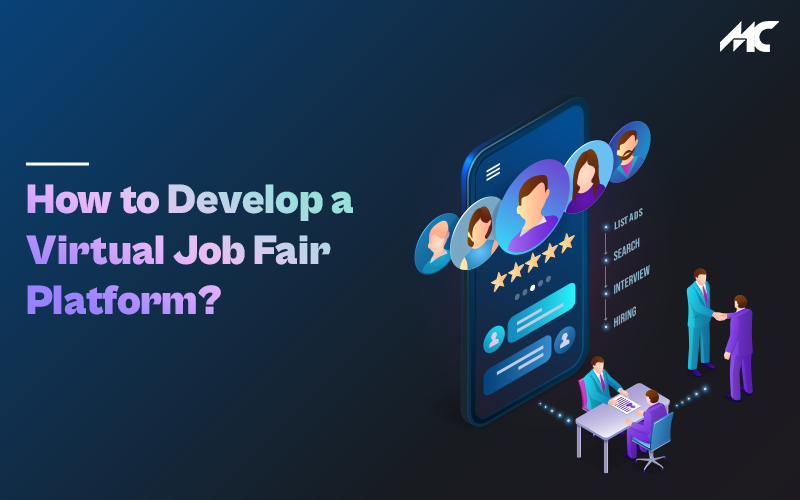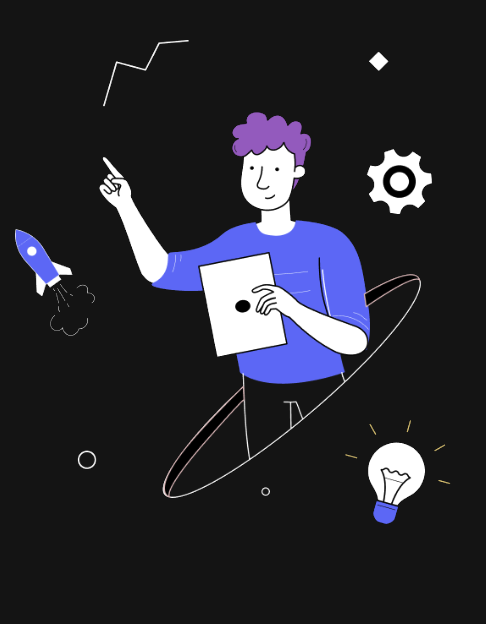How to Develop a Virtual Job Fair Platform?
Onboarding the best talent plays a major role in a company’s success. The recruitment industry has seen massive changes in recent times with the global health crisis and remote working culture. Above all, effective digital transformation is also shaping new talent acquisition methods.
Traditionally, walk-in interviews and job fairs were often organized to gather the best talent pool. However, with the changing digital world and remote work culture, these events are also organized through digital solutions.
These virtual fairs would be a great way to empower the people who had lost their jobs during the Covid-19 era. The increasing number of virtual fairs has also increased the demand for digital solutions to recruit talented professionals remotely. In this blog, we are going to discuss how you can develop a virtual job platform.
These are some stats which will help you understand the potential of building a job fair platform.
Recruitment Industry Overview
- Around 80% of the organizations are having difficulty filling the vacant positions due to a shortage of skills
- 64% of the job applicants who find a negative hiring process would share their interview experience with their social circle. Thus, ultimately dissuading them to apply in the same organization.
- 60% of the candidates leave a job application process due to a lengthy, complex and cumbersome process
- Around 25% of the job seekers would turn down an employment offer if there are no remote work opportunities
- 83% of the job applicants believe that the employment process can be greatly improved if the employers had a clearer timeline of their recruitment processes
- Around 52% of organizations have to make delays or entirely cancel projects due to a shortage of available talented processes
- 68% of recruiters think that digital transformation is the key to improving the hiring process
What are Virtual Job Fairs?
Virtual job fairs are basically digital events on the internet to hire talent for organizations. These events are organized for a specific time and date, they allow multiple attendees from various locations to meet virtually and get involved in the recruitment process.
A virtual fair effectively connects recruiters, hiring managers, and career advisors on the same platform. One-to-one video conferencing makes it possible to interact in a very natural way like they would interact in a normal recruitment meeting.
Both organizations and staffing companies are looking for such solutions to make their recruitment drives much smoother and more efficient. Moreover, organizing virtual career fairs might have multiple advantages, however, reducing recruitment costs remains the most significant advantage. However, building a virtual job fair platform isn’t an easy task.
There are a lot of development challenges that you might not be aware of. Therefore, it would be highly recommended to hire a prominent mobile app development company to develop your own platform.
How Does it Work?
Employers and organizations usually purchase subscriptions to virtual job fair platforms or build their own platforms for recruitment. Thus, it allows them to list their company information, job openings, marketing information, and other critical information.
In a regular virtual job fair platform, multiple organizations can list their opening creating a job portal like traditional recruitment sites. Then, job seekers can visit these platforms to learn about the best prospective job opportunities.
They are able to submit their resume and give proficiency tests depending on their interests, education, and professional experience. Moreover, the interviews are conducted virtually on the platform itself. Ultimately, the applicants get notified about the selection or rejection of relevant job applications. This helps them to explore new opportunities more quickly and effortlessly.
Reasons to Build a Virtual Job Fair Platform
There could be multiple benefits of building a virtual job fair platform, this could streamline the hiring process and make organizations more efficient.
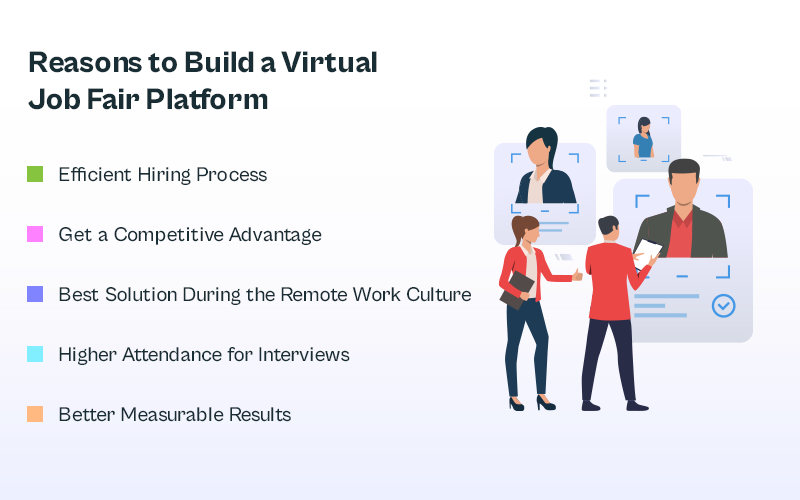

-
Efficient Hiring Process
The distances have been greatly reduced with the help of digital technologies. Companies can now hire professionals from overseas without actually making them travel. Plus, job fair platforms can be accessed from almost any location and device. This saves a lot of traveling costs, time, infrastructure costs, and more.
These virtual job fair platforms fast-track the recruitment process by easily conducting job applications, screening, scheduling, and interviewing processes. Ultimately, it becomes a lot easier for recruiters to find and hire the right professionals.
-
Get a Competitive Advantage
Companies using a virtual job fair platform are able to improve their brand presence in the market. Plus, they can create additional value and reputation in the market. Above all, job seekers often look for a flexible and convenient recruitment portal where they can instantly apply for jobs.
Thus, businesses with virtual job fair portals will be gaining a competitive edge against other recruiters and hire the best talent available in the market. The innovative job-seeking process would be very beneficial for catering the appropriate talent in less time.
-
Best Solution During the Remote Work Culture
The recruitment sector is facing a massive backlash from the global health crisis of Covid-19. The social distancing norms have restricted the companies from holding face-to-face interview processes. Therefore, virtual solutions are the only way to ensure a smooth recruitment process.
Even during the pandemic, the industry saw a massive demand for the virtual job fair platform. Only the technology-driven businesses were able to fill the vacant positions quickly without any hassle. Virtual job fairs are the best way to ensure the flow of the recruitment process and align the industry with the remote work culture. Therefore, building a virtual job fair platform could be very helpful for your business to sustain the recruitment process.
-
Higher Attendance for Interviews
Organizing a face-to-face interview is a time and convenience-bound process. In the world of social recruiting, people are giving more importance to convenience. Therefore, if you are conducting face-to-face interviews, then you might have limited attendance from a specific geographical area.
A virtual job fair platform allows recruiters to expect higher attendance and candidates from multiple regions. Therefore, they have higher chances of finding the right professionals for the openings. Plus, it would also attract talented individuals who might be comfortable attending traditional recruitment meetings.
-
Better Measurable Results
This is another major benefit of building a virtual job fair platform. It becomes incredibly easier to track the entire flow of data. Above all, you can measure the effectiveness of your recruitment process through detailed analytics.
The multichannel insights help you to understand each and every aspect of your platform. This is not possible with traditional platforms since you are dependent on multiple tools. The real-time data gathered from the recruitment drives and webinars are very helpful in planning future events.
Features That You Must Include in Your Virtual Job Fair Platform
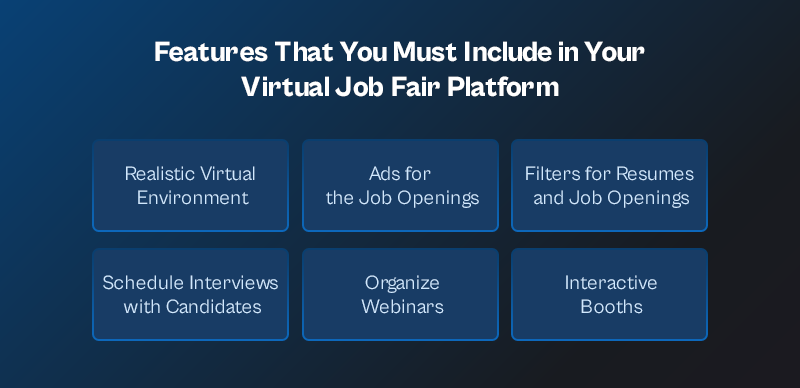

# Create a Realistic Virtual Environment
Instead of making it purely virtual and text-based, you can invest in building an interactive virtual environment. Either you can invest in VR technology to create a very immersive environment for the recruitment process or create digital avatars for each individual. In order to make this easily understandable, you can create some welcome videos, tutorials, and other videos. Ultimately, this would enable the candidates to sink into a more immersive virtual environment.
# Create Advertisements for the Job Openings
There should be a dedicated space for employers to list their vacant positions to attract potential job seekers. This would make the job discovery process faster and much more convenient.
# Develop Filters for Resumes and Job Openings
This would help both employers and job seekers to find relevant matches. While the employers would be able to find more relevant candidates for their openings. On the other hand, job seekers will be able to discover the jobs according to their preferences like salary packages, location, responsibilities, perks, etc.
# Ability to Schedule Video & Audio Interviews with Candidates
A virtual job fair platform must enable employers to organize video or audio interviews with their candidates. Therefore, they won’t need to leave the platform for another communication tool. The platform should provide proper scheduling tools to book interviews with the candidates.
# Ability to Organize Webinars
Organizations often organize career webinars to attract the best talent from the market. Moreover, this also helps them in branding and creating a good reputation among professionals. Therefore, the virtual job fair platform must allow employers to host pre-recorded and on-demand webinars.
# Creating Interactive Booths
It would be highly advisable to create separate booths for each department. This is a great element for personalization, better branding, and marketing of your organization.
The Implication of VR Technology on a Virtual Job Fair Platform
Virtual Reality technology already has a massive impact on various industries. In fact, it has become the major driving factor behind innovation in the entertainment, gaming, tourism, and education industry. The introduction of VR technology will completely innovate the recruitment industry as well.
The interview process in a virtual environment will be life-like and provide a very immersive experience for everyone. For example, it would become possible to replicate the real-world interview setting in the virtual environment.
The interactions will be a lot more realistic and meaningful in the interviews powered with Virtual Reality. Moreover, the introduction of the Metaverse can even create new possibilities for users.
Tools & Technologies Required for Developing a Virtual Job Fair Platform
These are some crucial technology stacks and development tools that you must consider while developing your virtual job fair platform;
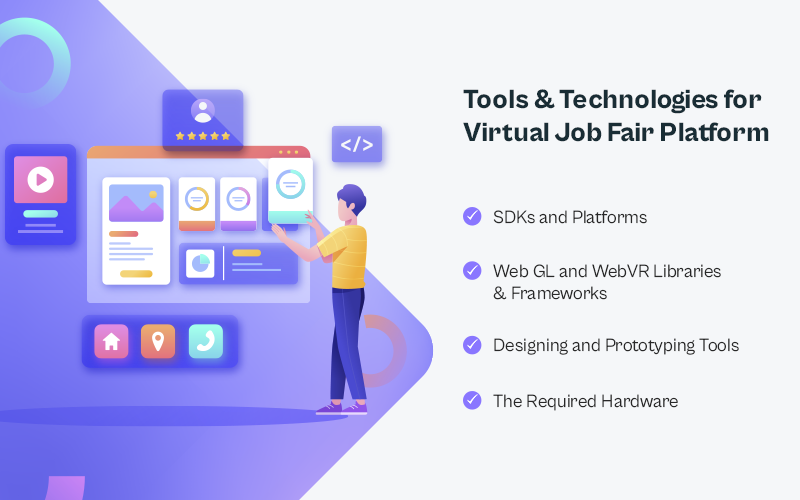

a. SDKs and Platforms
If you are building a virtual job fair platform with VR technology, then you will be working with software platforms like Oculus Home, XboxVR, and SteamVR. Therefore, your users might not need to install or configure any additional software to get started with the virtual job fair platform. This would help you to ensure consistent performance on your platform.
b. Web GL and WebVR Libraries & Frameworks
You have to use these JavaScript frameworks in order to facilitate the proper API for virtual reality (VR) applications.
c. Designing and Prototyping Tools
The design of your VR implementation will determine the overall quality of your virtual job fair platform. Therefore, you have to invest heavily in designing and prototyping tools to check the immersive experience of your virtual environment. Hiring a digital transformation company could be a great idea to get assistance with the designing process.
d. The Required Hardware
If you aspire to create a virtual job fair platform with VR technology, then you have to think about the necessary hardware. The Oculus Rift VR and HTC Vive remain the most popular options among users for accessing VR content. However, there is more VR hardware that provides effective implementation of VR technology.
Virtual Job Fair Platform Development Process
The process to develop your own virtual job fair platform is a long and complex process. Therefore, we have divided the process into 8 stages. Moreover, each stage might have individual tasks and processes that might require extensive technical expertise.
1. Defining the Budget
Since you want to develop a standalone platform for organizing virtual job fairs, it is important to define the budget even before starting the development process. Although, organizing virtual fairs is known to be a cost-effective measure to hire professionals. But you have to be very considerate about your budget to avoid overspending.
In fact, there’s no point in developing a platform if it exceeds the cost of the recruitment process more than the traditional methods even in the long run. Therefore, it is very important to draft proper budgeting for individual stages of the development process. In this way, you will be able to micro-manage every aspect of the development process.
The development budget can be dependent upon a lot of factors such as the scale of the platform, development team, complexity, features, etc.
2. Hiring the Right Technical Professionals
When you are building a virtual job fair platform, you have three options to set up your development team. First, you can start building an in-house development team by hiring on your own. However, this might not be a cost-effective and feasible option especially if you are working on a small scale.
Second, you can hire developers and engineers from freelancing platforms to develop your platform. This model might be very affordable but there’s no guarantee of quality development.
Lastly, you have the option of hiring a prominent mobile app development company. MobileCoderz is a premier digital transformation company that provides top-class mobile and web development solutions for the recruitment industry.
They will have extensive experience in the industry and the right pool of skilled talent. For this reason, you will be able to ensure a cost-effective and quality development process without any hassle.
3. Determining the Features of the Platform
Now, you and your development team will need to brainstorm the features that you could implement in your platform. Above all, it would be highly advisable to only implement useful and relevant features in your platform.
Unnecessarily adding features would only increase the total platform development cost. Plus, it might even confuse the users with complex processes and features. Anyway, these are some critical features that you must include in your virtual job fair platform;
- Secure chat channel
- Webinar tools
- Video and audio conferencing tools
- Document management tools
- Interactive job boards
- Information desk
- Customizable virtual booths
- Smart search and filters
- Presentation tools
4. Designing the UI/UX of Your Platform
The UI/UX for the virtual job fair platform will have a significant impact on creating a positive first impression on the employers and candidates applying for jobs. Moreover, you will be able to create a better brand perception in the users’ minds if you focus on the design and user experience part.
The designing team of your platform must focus on creating a user-friendly, intuitive, minimalistic, and interactive UI/UX design. This would simplify the experience and help you engage the users for a longer period of time.
This is the smooth breakdown of the UI/UX design process:
a. Workflow & Architecture
This is the first step in the UI/UX design process. Here, you have to define how the information will be shown to the end-users on your virtual job fair platform. Above all, your team will need to define the complete user journeys.
This is helpful in understanding how the data is collected through user interactions on the platform. Plus, this is also about defining various privileges and roles in the app’s architecture.
b. Creating Wireframes
The next step is about creating Wireframes for your platform’s UI design. These are just digital blueprints or conceptual layouts that give us a visual presentation of the platform’s needs and implementation. Above all, you will have a better understanding of your job fair platform’s aesthetics and design.
c. Building Mockups
Building mockups could be very useful to get the best final visual representation of your platform’s design. Furthermore, these high-fidelity designs show the information architecture, aesthetics, and overall workflow of the platform.
d. Developing Prototypes
Building prototypes is a great way of gaining access to clickable visual interfaces of the platform. Moreover, this process is usually done by prototyping tools such as Figma, AdobeXD, and Invision. By using prototypes, you can have a better understanding of the user experience and the app’s workflow in the real world.
5. Core Development Process of a Virtual Job Fair Platform
The core development process requires extensive research and technical expertise. Thus, your development team must be proficient enough in;
- Determining the best technical architecture for your platform
- Selecting an appropriate stack for core development
- Determining the milestones for the development process
Components of the Development Process:
a. Working on Back-End or Server Side
The development team will need to create platform logic by working on the back-end side. This would require expertise with server-side objects and databases. Together, these elements will be responsible for supporting the functionalities of your virtual job portal.
b. API Selection and Integration
APIs are known for providing ready-to-use functionalities for software. Thus, it becomes important to integrate APIs to access additional bonus features in the application. For this reason, your development team should be skilled enough while they implement the right APIs into your platform.
c. Working on Front-End
The front-end side of an app or platform is meant for the end-users. Your developers will be responsible for creating an interactive user experience on the platform with the help of the best front-end technologies.
d. Ensure Smooth Development with Agile Methodologies
As we’ve mentioned before that the development process is a very complex process. Thus, if you don’t have any understanding of app development, then your development team must be following an Agile methodology to manage the project.
Agile is known for providing better insights, adaptability to change, and a transparent development approach. For this reason, you will be able to have better control and ownership over the development process.
6. QA Testing
The development process of your virtual job fair platform isn’t over after the core development process. For this reason, you will need a special QA team to check the security, integrity, reliability, and resilience.
Your team must be proficient in both manual and automated testing procedures because you have to rigorously test all the aspects of your app. It will help you to evaluate the performance, quality, and track fixes in your virtual job fair platform.
The following are some testing approaches that you should follow:
a. User Experience Testing
The user experience is everything to ensure the proper implementation of UX in the final version of the application. Above all, this step will cross-verify the style treatments, fonts, icons, colour schemes, navigation flows, and features.
b. Functional Testing
In this process, you have to ensure that every function of your platform is working as it was intended in the first place. Moreover, this is a critical process that lets you discover new bugs and glitches in your platform.
c. Performance Testing
These test cases are developed to check the overall performance of your virtual job fair platform. Thus, these should be your primary criteria to check your performance;
- App response after user requests
- Loading screen speed
- Battery and memory management
- Network bandwidth utilization
- Application package size
d. Security Testing
This testing approach is super important to ensure the security status of your platform. Thus, by having greater security standards on your portal, you will be able to attract more employers and job seekers.
e. Platform and Device Testing
If you want your virtual job fair platform to perform well on multiple devices and operating systems, then it becomes important to conduct platform and device testing. Above all, the testing team will make sure that the platform provides a uniform and stable user experience on all devices.
7. Hire Staff, Exhibitors, and Sponsors
This step is only valid if you are building the virtual job fair platform for your organization. Thus, after building your platform, you have to hire the relevant users onboard.
You’ll need to hire enough people to ensure smooth operations in your virtual job fair platform. Above all, you should have recruiters, moderators, admins, and policymakers on your platform.
At the same time, you also find sponsors who are looking for a platform to organize their webinars or promote services. As a result, you will also create a revenue channel for your virtual job fair platform.
They can also help you suggest topics like CV building, interview preparation, and training for your webinars.
8. Promoting the Event
You might have built a solid platform for job seekers. However, you also need to invest in marketing to ensure decent footfall for your job fairs. Therefore, you should use a multichannel approach to market your portal to the right audience.
This would need you to launch social media campaigns, email marketing, press releases, and other effective marketing channels.
Building a Virtual Job Fair Platform with Digital Transformation Experts
There are a lot of challenging factors that might appear if you are planning to develop your virtual job fair. Thus, it would be highly advisable to hire a digital transformation company like MobileCoderz to develop your platform.
We have years of expertise in developing world-class digital solutions that help businesses digitally transform their operations. Moreover, by hiring us, you gain access to an expert development team and assurance of quality development.
-

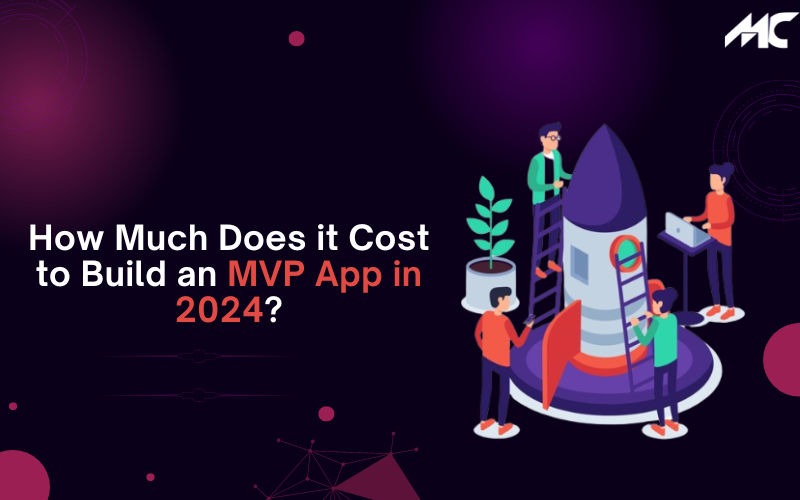 How Much Does it Cost to Build an MVP App in 2024?
How Much Does it Cost to Build an MVP App in 2024? -

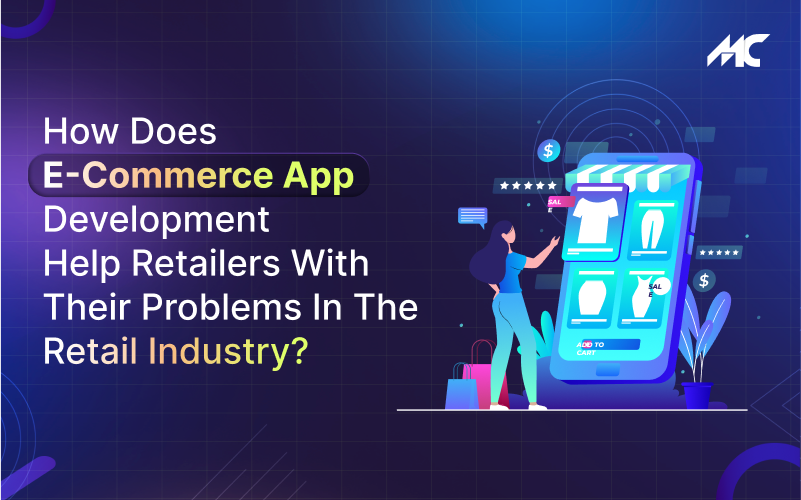 How Does E-Commerce App Development Help Retailers With Their Problems in the Retail Industry?
How Does E-Commerce App Development Help Retailers With Their Problems in the Retail Industry? -

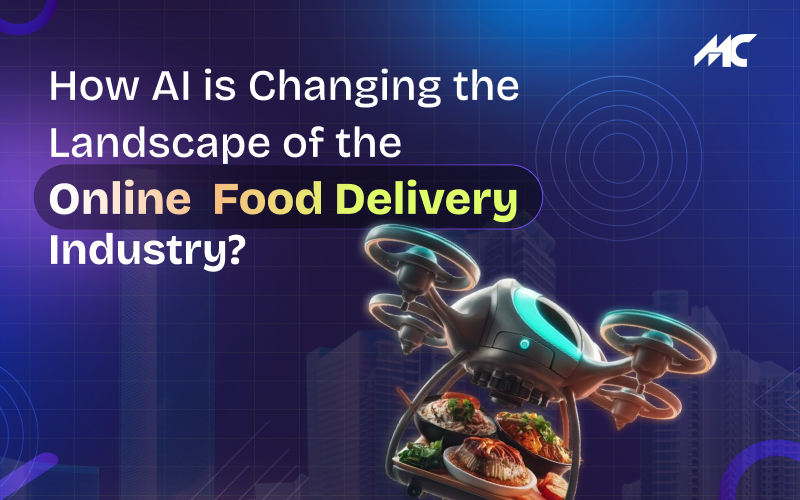 How AI is Changing the Landscape of the Online Food Delivery Industry?
How AI is Changing the Landscape of the Online Food Delivery Industry?



